Space
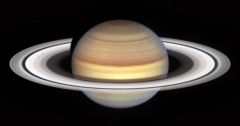
Jul 9th, 2025 - A bright flash on Saturn was captured by NASA's Mario Rana on July 5, 2025. This marks the first time we've ever seen an object crash into the ringed giant in real time. Now, astronomers around the world are scrambling to verify what could be a rare and historic planetary event. Rana, a volunteer with NASA's Planetary Virtual Observatory and Laboratory (PVOL), was imaging Saturn when the sudden burst of light appeared. The flash occurred at around 09:00 UTC and stood out sharply against the ... [Read More]
Source: bgr.com

Jul 9th, 2025 - Astronomers have recently added a new member to the small club of confirmed interstellar objects. The icy wanderer, known as 3I/Atlas, was officially recognized this week by the International Astronomical Union's Minor Planet Center (MPC). Observations showed it is racing through the solar system on a hyperbolic path – one that will carry it back into interstellar space after a brief celestial cameo. A fuzzy comet with incredible speed Early images of 3I/Atlas revealed the hazy glow ... [Read More]
Source: earth.com

Jul 9th, 2025 - Scientists spot traces of 10,000 miles of rivers in area where many believed 'there wasn't any evidence for water' Thousands of miles of ancient riverbeds have been discovered in the heavily cratered southern highlands of Mars , suggesting the red planet was once a far wetter world than scientists thought. Researchers spotted geological traces of nearly 10,000 miles (16,000km) of ancient watercourses, believed to be more than 3bn years old, in high resolution images of the rugged landscape ... [Read More]
Source: theguardian.com
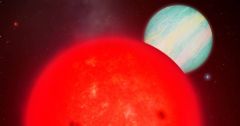
Jul 9th, 2025 - A gas giant comparable in size to Saturn has been found orbiting a small red dwarf star. The discovery is making experts reconsider conventional notions of how planets form. Many of the stars in the Milky Way galaxy are small, dim red dwarfs —stars much smaller than the sun in both size and mass. TOI-6894, located far away from Earth, is one of them. Astronomers previously thought a star like this could not have large planets circulating it, because its mass is only about 20 percent of ... [Read More]
Source: wired.com

Jul 9th, 2025 - Space might be far colder than Earth, but the frozen water found on comets, icy moons, and interstellar dust is far more complex than the ice in a home freezer. A new computational and laboratory study from scientists at University College London (UCL) and the University of Cambridge overturns a decades-old assumption about "space ice." Instead of being a totally shapeless solid, low-density amorphous ice contains countless nanoscopic crystals. The team reports that these crystals are only a ... [Read More]
Source: earth.com

Jul 9th, 2025 - On July 9, 1979, NASA's Voyager 2 spacecraft came within 404,003 miles (650,180 kilometers) of Jupiter . Launched in August 1977, the Voyager probes were originally planned to study Jupiter and Saturn. Voyager 1 arrived at Jupiter in March 1979, and Voyager 2 followed a few months later. Equipped with narrow- and wide-angle cameras, an interferometer, an ultraviolet spectrometer, a magnetometer, and more, Voyager 2 showed that the Great Red Spot was a storm system and revealed Jupiter's thin ... [Read More]
Source: astronomy.com
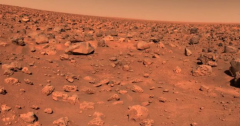
Jul 9th, 2025 - History from countries and communities across the globe, including the world's major wars. The stories behind the faiths, food, entertainment and holidays that shape our world. On July 20, 1976, the Viking 1 spacecraft relayed the first images from the Red Planet, revealing a desert-like world—and hints of possible life. Viking 1 landed in Chryse Planitia—Greek for "Golden Plain"—a broad, flat region near the Martian equator. Just six weeks later, Viking 2 followed suit, ... [Read More]
Source: history.com
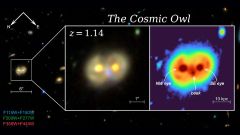
Jul 8th, 2025 - Whoooooo's there? Just a "Cosmic Owl," the latest strange discovery from the James Webb Space Telescope ( JWST ). A new study using JWST data has helped scientists spot an owl-faced object peering out at us from billions of light-years away. Formed through the extremely unusual collision of two rare ring galaxies , the structure also serves as a natural laboratory where researchers can study many of the processes accompanying the evolution of galaxies. Galaxies come in several shapes, from ... [Read More]
Source: livescience.com

Jul 8th, 2025 - Controversial model posits Earth and our galaxy may reside in a supervoid. Imagine waking up one day to find out you live inside a vast, invisible bubble — a region of space so vast it stretches a billion light-years across, and yet so elusive it leaves no visible boundary. According to a provocative new study, that might just be our cosmic address. This idea is meant to solve one of the biggest puzzles in cosmology: the Hubble tension. This long-standing discrepancy concerns two ... [Read More]
Source: zmescience.com

Jul 8th, 2025 - Over the past two years, scientists using the 10-meter South Pole Telescope (SPT) have mapped about 1/25 of the sky using 16,000 ultra-sensitive millimeter-wave detectors. The data offer new details about the early universe and help scientists probe the nature of dark energy, the mysterious force driving cosmic acceleration. Now, the international team behind the effort has released their data, revealing the most detailed maps yet of the cosmic microwave background's (CMB) temperature and ... [Read More]
Source: earth.com
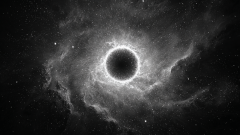
Jul 8th, 2025 - Our quest for dark matter is sending us on some wild adventures. Stars like our Sun are powered by nuclear fusion, but a bizarre type of stars called "dark dwarfs" could actually be powered by elusive dark matter. It's a bold new idea in astrophysics, and one that would make the universe even more intriguing than it is now. But there's only one problem: we haven't yet seen a dark dwarf. Our universe is made of what? Grossly speaking, the universe is primarily composed of three things: ordinary ... [Read More]
Source: zmescience.com
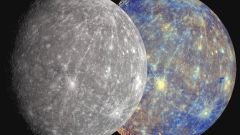
Jul 6th, 2025 - Most meteorites that have reached Earth come from the asteroid belt between Mars and Jupiter . But we have 1,000 or so meteorites that come from the Moon and Mars. This is probably a result of asteroids hitting their surfaces and ejecting material towards our planet. It should also be physically possible for such debris to reach the Earth from Mercury , another nearby rocky body. But so far, none have been confirmed to come from there — presenting a longstanding mystery. A new study my ... [Read More]
Source: livescience.com

Jul 6th, 2025 - A top a mountain in Chile, where the days are dry and nights are clear, a team of scientists and engineers is preparing for one of the most important astronomical missions in recent times. Among them is Kshitija Kelkar, whose life has taken an interesting turn. Twenty years ago in Pune, the city she's originally from, Kelkar sent a photo of a lunar eclipse she had taken with a digital camera to Sky and Telescope , a popular astronomy magazine. The publication accepted the photo and released it ... [Read More]
Source: timesofindia.indiatimes.com
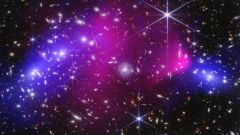
Jul 6th, 2025 - What it is: The Bullet Cluster Where it is: 3.7 billion light-years from Earth, in the constellation Carina When it was shared: June 30, 2025 Why it's so special: Galaxy clusters act as a magnifying lens, shining light on the faintest and most distant objects — a phenomenon known as gravitational lensing. On the rarest of occasions, galaxy clusters collide, creating an even more massive lens. The James Webb Space Telescope ( JWST ) recently provided extremely detailed observations of such ... [Read More]
Source: livescience.com

Jul 6th, 2025 - Astronomers poring over new data from the James Webb Space Telescope have reported the most compelling hints yet that "dark stars," cosmic behemoths fed by dark matter, really existed. A new analysis of five ultra‑distant objects shows spectra and shapes that match simulations of dark stars rather than ordinary fusion‑powered suns. The candidates sit more than 13 billion light‑years away, meaning their light left them when the universe was only a few hundred million years old. ... [Read More]
Source: earth.com
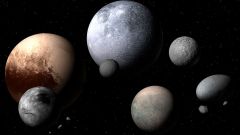
Jul 5th, 2025 - In 2006, Pluto was famously demoted from a planet to a dwarf planet. It remains the most famous dwarf planet today, but there are others in our solar system , including potentially hundreds that haven't been discovered yet. But what, exactly, is a dwarf planet? And how many dwarf planets are there? A dwarf planet is a celestial body that is smaller than a planet but bigger than an asteroid or other small rock in the solar system. They're not planets because they only meet two of the three ... [Read More]
Source: livescience.com